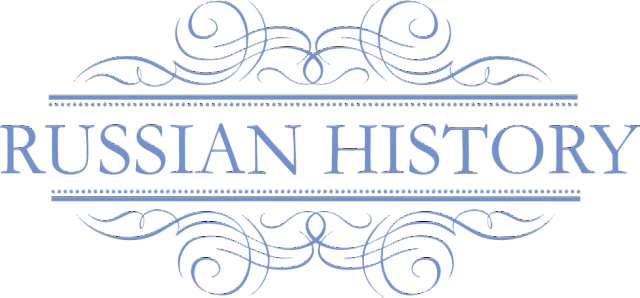13th Century

The 13th century is a crucial century in Russian history which is marked by the devastation that was the Mongol-Tatar invasion of Rus and the start of the two century long Mongol Yoke. Despite the destruction, the catastrophe played a significant role in the development of Moscow which was only a small town when the Mongols sacked it but saw an influx of refugees from older and larger cities harder hit by the invasion. The deeds of Russia’s most celebrated hero – Prince Aleksandr Nevsky – in the mid-century also helped return some dignity to the country trying to recover from the Mongol onslaught. The century ended with Rus fragmented into many small appendages.
Konstantin I, Yuri II and the Battle of Lipitsa River
Vsevolod the Big Nest made his eldest son Konstantin prince of Rostov in 1208 but intended to make him grand prince upon his death and have Rostov passed to his second son Yuri Vsevolodovich. However Konstantin did not support his father’s plan and insisted that he should be left both Vladimir and his principality of Rostov. Konstantin had obviously become attached to his principality, where he was oversaw much construction work. In response Vsevolod disinherited him completely and decreed that Yuri should succeed him as grand prince of Vladimir. Vsevolod died in 1212 and, as decided, Yuri became grand prince of Vladimir as Yuri II. Konstantin was none too pleased and allied himself with Prince Mstislav Mstislavich the Bold of Novgorod (who later became ruler of Galicia). The coalition met Yuri in battle close to the Lipitsa River near Yuriev-Polsky. Yuri was defeated and forced to flee, allowing Konstantin to take the throne. During the battle, chroniclers noted how Yuri's brother and ally Yaroslav Vsevolodovich had lost his helmet in the battle. Amazingly this helmet, bearing the patron saint of Yaroslav, was discovered in 1808 by a peasant women from near Yuriev-Polsky and is now on display in the Kremlin’s Armoury Museum.
Konstantin I did not rule for long. He died in 1218 and Yuri II once again became grand prince of Vladimir. In 1220 Yuri sent his brother Svyatoslav to Volga Bulgaria to get revenge for previous raids into Rus lands. In 1221 Yuri himself took part in a campaign and on a hill where the River Oka flows into the River Volga he founded a fortress calling it Novgorod on the Lower Grounds – now known as Nizhny Novgorod.
First Appearance of the Mongols
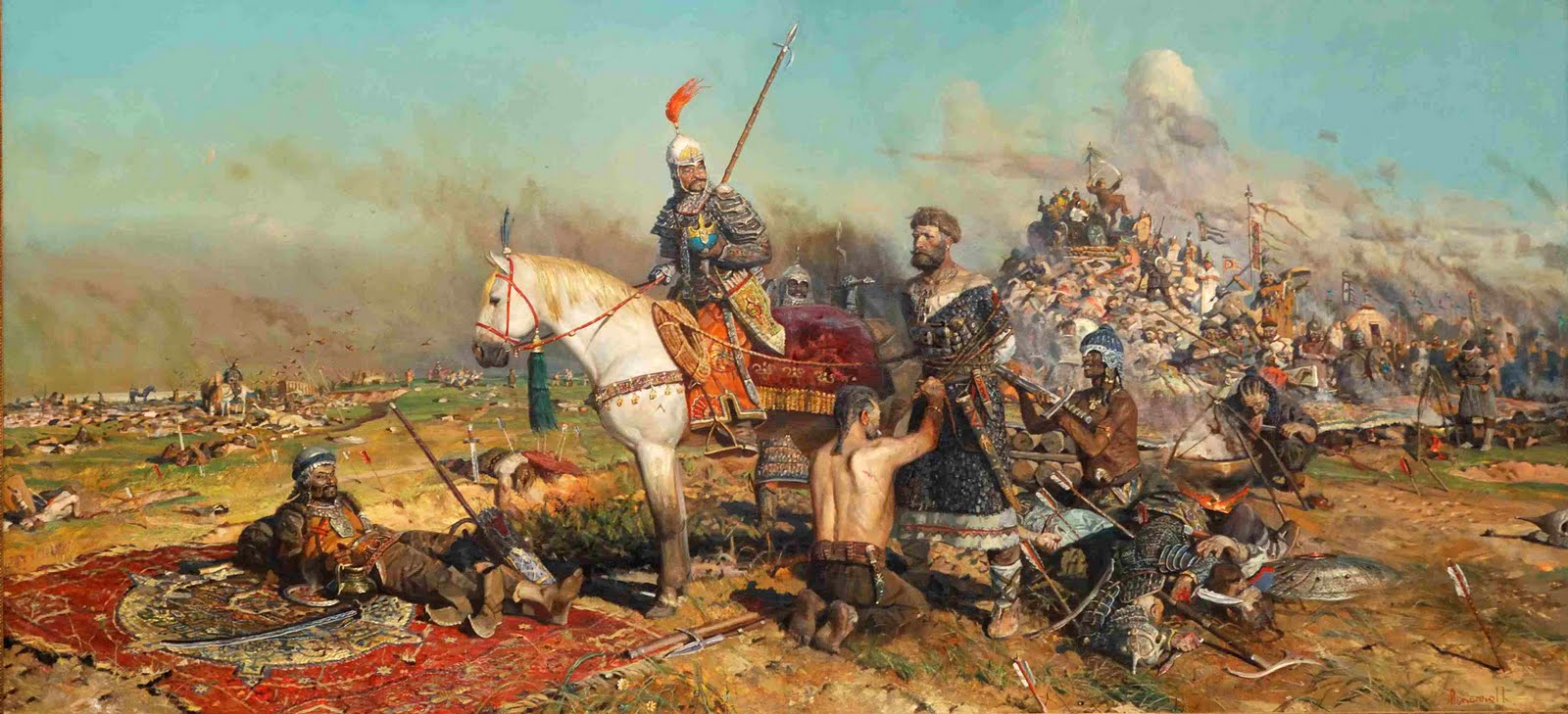
In 1223 Khan Kotyan Sutoevich of the Polovtsians appeared at the court of his son-in-law Prince Mstislav the Bold of Galicia saying that a fearsome enemy had appeared from the east and captured his lands and that if the Rus princes did not help, their land would be next. The Polovtsians had become the victim of the Mongolian army led by Jebe and Subutai. Mstislav the Bold only acted when information reached the prince that the Mongols had been spotted along the River Dniester. Mstislav the Bold created a coalition with the Polovtsians, Grand Prince Mstislav Romanovich of Kiev (known as Mstislav the Old) and Prince Mstislav Svyatoslavich of Chernigov. Grand Prince Yuri II of Vladimir also agreed to send troops. The main battle took place close to the River Kalka and the Rus coalition quickly found itself outmanoeuvred by the Mongol war machine. Mstislav the Bold and Khan Kotyan managed to escape with their lives, but Mstislav of Chernigov fell in the battle and Mstislav the Old had no choice but to surrender to the Mongols. He was later executed by the victorious Mongols according to their tradition not to shed royal blood. He was buried underneath a platform set up for a celebratory feast and was suffocated. Upon arriving in Chernigov, Prince Vasily Konstantinovich of Rostov, who was leading the contingent of Vladimir troops, heard of the crushing defeat and returned home. Mstislav the Bold expected the Mongols to march on Galicia, but after the battle the Mongols left Rus lands just as suddenly as they appeared. However, unbeknown to Mstislav, this was just a reconnaissance mission.
Once the Mongols had retreated back to Asia, the Rus princes did not see the importance of using this respite to unite in order to defend themselves against any further Mongol threat. Instead the standard internecine wars continued. Yuri II of Vladimir led campaigns against Novgorod and there were struggles for the Chernigov and Kiev Principalities. To make things worse the Livonian Brothers of the Sword were becoming more of a threat to Novgorod.
Mongol-Tatar Invasion of Rus
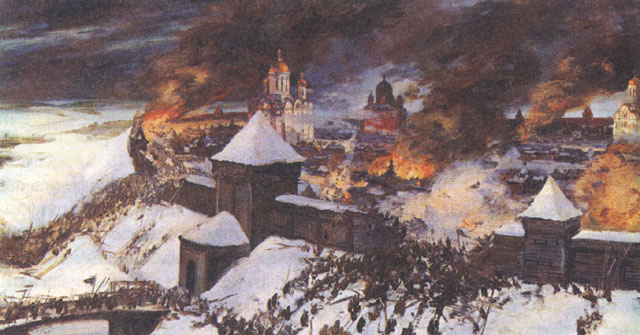
The Mongols, supported by the Tatars, began their full-blown invasion of Rus in November 1237 having overrun Volga Bulgaria the previous year. The army was led by Batu Khan, grandson of Gengis Khan. In Gengis Khan’s will Batu was left all land west of the Volga, all he had to do was conquer it. The first city to bear the brunt of the Mongols was Ryazan. Prince Yuri Igorievich of Ryazan was given the choice of submitting or being annihilated. Yuri though opted for resistance and sent a request for help from Grand Prince Yuri II of Vladimir. Vladimir responded by sending an army led by his own son Vsevolod. Ryazan held out just six days; once it fell, the city was completely destroyed and all its civilians were slaughtered. Prince Yuri was killed during the defence. Old Ryazan was never rebuilt; the modern day Russian city of Ryazan is a different city which was at the time of the invasion known as Pereslavl-Ryazansky.
The army from Vladimir met the Mongols outside Kolomna in January 1238. Although Kyulkhan, a son of Gengis Khan, fell at the battle the Mongols were again victorious and Vsevolod Yurievich had no choice but to flee back to Vladimir. The Mongols proceeded to burn down Kolomna. From Kolomna, the Mongols headed to Moscow, then just a small settlement. Moscow fell in five days and Vladimir Yurievich, another son of Yuri II who was charged with defending the city, was taken prisoner. By now Yuri II understood the challenge ahead of him and left Vladimir to raise an army that would be able to halt the Mongols, nominating the River Sit as the gathering point for troops.
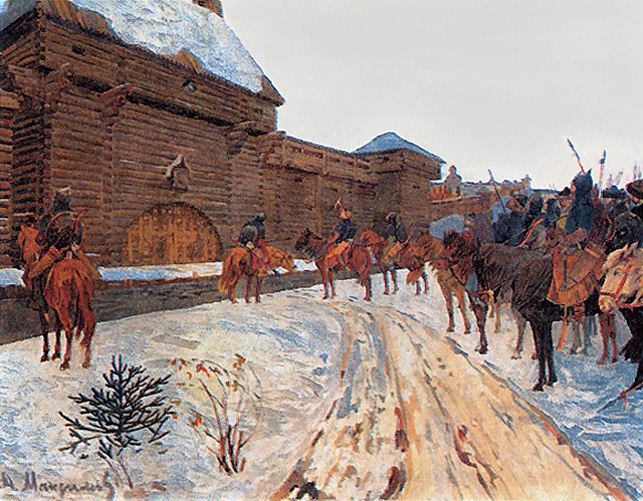
The Mongols arrived at the walls of Vladimir at the beginning of February 1238. The defence of the capital had been left to the city commander and Yuri’s sons Vsevolod and Mstislav. Outside the walls the Mongols executed Vsevolod and Mstislav’s brother Vladimir who had been captured when Moscow fell. During the subsequent siege part of the Mongol invasion force separated and sacked Suzdal. Vladimir fell after four days, the royal family barricaded themselves in the Dormition Cathedral, but all were slaughtered.
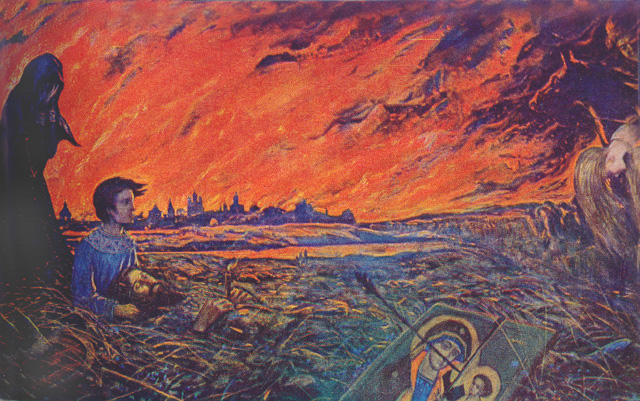
From Vladimir the Mongol army split into two to subdue the rest of the Vladimir Grand Principality. In all 14 cities were sacked: Suzdal, Pereslavl-Zalessky, Yuriev-Polsky, Starodub-on-Klyazma, Tver, Gorodets, Kostroma, Galich, Rostov, Yaroslavl, Uglich, Kashin, Ksnyatin and Dmitrov. It was the part of the Mongol force led by the commander Burundai which finally met with the Rus forces gathered by Yuri II. The battle between the two armies took place in the beginning of March 1238 near to the River Sit, and although the Rus troops were able to somewhat weaken the Mongols, they were ultimately defeated. Yuri II fell in the battle, along with his nephew Prince Vsevolod Konstantinovich of Yaroslavl. In the meantime the main part of the Mongol army had entered the Novgorod Republic and sacked Torzhok. After Torzhok the army was once again reunited and it looked as if Novgorod would be next, however instead the Mongols retreated back towards the steppe from where they came. It is not known for sure why the Mongols overlooked the rich and significant city of Novgorod, one theory is that they were two weakened after months of campaigning and the Battle of the River Sit.
On their return the Mongols camped outside of Smolensk but here too they did not make an attempt to capture this other significant city. According to legend, the sparing of the Smolensk is credited to St Mercurius of Smolensk and the protection of the Virgin Mary. When praying to the Our Lady of Smolensk Icon the Virgin Mary is said to have appeared to St Mercurius and ordered him to ride out to meet the invaders. During the battle Mercurius was beheaded, but the city was not attacked.
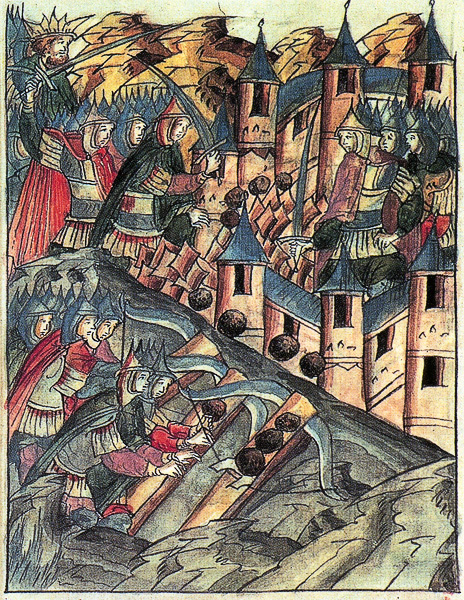
In the spring of 1238 the Mongols next target was the small city of Kozelsk which at the time was ruled by a teenage prince. Although the city was well-fortified with earthen mounds and a wooden kremlin, it was unlikely that the Mongols expected much resistance from this small city. However later Batu would later call Kozelsk an "evil city" as it managed to hold out for seven weeks during which thousands of Mongol-Tatar soldiers lost their lives. Once the city was eventually captured its inhabitants, including young Prince Vasili, were massacred and the city was razed to the ground. Kozelsk was the last city to fall during this campaign as the Mongols retreated back to the steppe.
The second campaign began in the spring of 1239 which saw Murom, Gorodets, Nizhny Novgorod and Gorokhovets being sacked before the army took Pereyaslavl and Chernigov. Finally in spring 1240 Kiev and then Galicia fell to the Mongols. From Galicia the Mongols went on to invade Poland, Hungary and the Balkans and to threaten central Europe. The Mongol’s campaign to reach the Great Sea ended only when news of the death of Great Khan Ögedei reached Batu in 1241 as Batu was forced to return to Karakorum for the election of a new great khan. With the exception of Novgorod, Smolensk and Polotsk, every major Rus city had fallen to the Mongols. The age of the Mongol-Tatar Yoke had begun.
The Mongol-Tatar Yoke
Batu Khan was not named grand khan and so he returned to his newly captured territories to consolidate his rule. He founded the city of Sarai on the Volga (about 120km north of modern-day Astrakhan) to serve as the capital of his realm which became known as the Ulus of Jochi, the Kipchak Khanate or, more commonly, the Golden Horde. In 1243 Batu summoned Yury II’s brother Yaroslav Vsevolodovich to Sarai. Batu granted Yaroslav a patent confirming him as grand prince of Vladimir (Yaroslav II) and the most senior of all Rus princes, thereby finally cementing Vladimir’s status as capital. However now Rus was merely a vassal of the Golden Horde. The Rus princes had to recognise the authority of the khan, oversee the collection and delivery of the tribute and provide troops from time to time to participate in the campaigns of the khan. In all other aspects Rus matters, including religious affairs, were left the Rus princes, with limited interference from the Golden Horde.
Batu once again called Yaroslav II to Sarai in 1245 and then sent him onwards to Karakorum in Mongolia to attend the coronation of Grand Khan Güyük. While in Karakorum Yaroslav II died, allegedly poisoned by Güyük’s mother Töregene. Over time the Mongol authorities adopted Tatar traditions and the chronicles refer less and less to the Mongols and more about the Tatars.
The Battle of the Neva
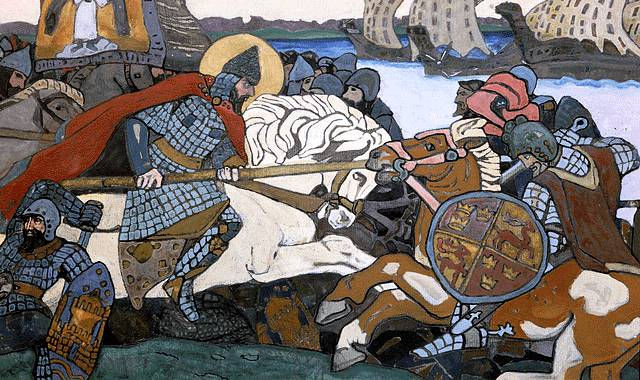
Novgorod may have been spared the terror of the Mongol-Tatar Invasion but it faced its own enemies in the form of Sweden and the Livonian Order of the Teutonic Knights (Livonia being located in what is now Estonia and Latvia). Both realised that the chaos inflicted on Rus by the Mongols gave them a chance to capture territory from the Novgorod Republic. In 1240 the prince of Novgorod was Aleksandr Yaroslavich, the teenage son of Yaroslav II. Upon hearing that the Swedes were invading Novgorod he led a small army to meet the invaders. The battle took place on the mouth of the River Izhora on the River Neva and was won by the Novgorodians. After the battle Aleksandr became known as Aleksandr Nevsky – Aleksandr of the Neva - and became incredibly popular with all expect the Novgorod boyars, who were worried by his hero status and therefore his potential influence. In the same year the boyars expelled Nevsky from Novgorod.
The Battle on the Ice

The Swedes had been dealt with by Aleksandr Nevsky but the Livonian Order of the Teutonic Knights were still active in the Novgorod Republic carrying out a second northern crusade against Baltic pagans and the Orthodox Rus. In 1240 they had captured Izborsk and Pskov and founded a wooden fortress in Koporye. By 1241 they were threatening Novgorod itself and the boyars realised their mistake and invited Nevsky back. Nevsky immediately raised an army, destroyed the fortress at Koporye and liberated Pskov. He met the knights in battle on the frozen Chudskoe Lake (Lake Peipus) in April 1242. Nevsky led the knights out on the ice who found it almost impossible to fight on the slippery surface of the frozen lake and, when the ice finally gave way under the weight of their heavy armour, many knights were drowned. Nevsky, who was then still only 20, had once again saved Novgorod from a foreign invader in a battle that has been remembered as the Battle on the Ice.
After Yaroslav II
When news reached the Vladimir Grand Principality that Yaroslav II had died in Mongolia, he was succeeded by his brother Svyatoslav Vsevolodovich (Svyatoslav III) who allotted the five surviving sons of Yaroslav parts of the principality. Aleksandr Nevsky gained Pereslavl-Zalessky where he was born, Andrey gained Suzdal, Mikhail - Moscow, Yaroslav - Tver, Konstantin - Galich and Vasili - Kostroma.
Svyatoslav III succeeded his brother under the traditional line of succession as the next most senior prince. However everything had changed and the crucial factor in deciding the next grand prince now was the permission of the khan. Understanding this, the two eldest sons of Yaroslav II, Aleksandr Nevsky and Andrey, set off for Sarai in 1247. Once there Batu Khan sent them onwards to Mongolia, where Grand Khan Güyük confirmed Andrey as grand prince in 1248. In the meantime , Aleksandr and Andrey's brother Mikhail - known Khorobrit which can be translated as the Brave or Bold - ignored both the traditional line of succession and the permission of the khan and seized Vladimir from his uncle. Svyatoslav III returned to his former principality of Yuriev-Polsky, where his mark on the city is still visible in the form of the stunningly beautiful St George's Cathedral.
No sooner had Mihail Khorobrit installed himself in Vladimir he had to deal with an invasion by Lithuania. The armies met on the River Protva (a tributary of the Oka) in January 1248 and Khorobrit had the misfortune of becoming the last grand prince to die in battle. Despite the loss of the Battle of the River Protva, the Lithuanians were eventually stopped. Andrey Yaroslavich finally returned to Vladimir to take up his position as Grand Prince Andrey II.
Reign of Aleksandr Nevsky
In 1251 Möngke, another grandson of Gengis Khan and an ally of Batu Khan, was elected grand khan and these events in Mongolia had an effect on the situation in Vladimir. Batu Khan was always more in favour of Aleksandr Nevsky and did not agree with Güyük's candidate for grand prince of Vladimir. In 1252 Batu sent a Tatar army led by the commander Nevryui against Andrey II who fled firstly to Novgorod and then to Sweden. Aleksandr Nevsky was named grand prince of Vladimir in his younger brother's place in 1252. In 1256 he made peace with his brother Andrey who returned to Rus and was made prince of Suzdal, which then included Nizhny Novgorod.
In 1263 Mongol-Tatar tax officials were killed in various cities in Rus and Berke, the new khan of the Golden Horde, demanded a response to the show of resistance. Aleksandr Nevsky set off to the Horde once more to try to lessen the response. Aleksandr fell ill whilst in the Horde and on his journey home he died in the city of Gorodets. News of his death was met with great sadness in Vladimir, where he was interred at the Rozhdestvensky Monastery. To this day Aleksandr Nevsky remains the most favourite mediaeval Russian hero, who is celebrated with defending Rus from foreign invaders and returning some pride to the Rus after the destruction of the Mongol-Tatar invasion. His subsequent cautious dealing with the Mongols, fully understanding that Vladimir was in no position to attempt to overthrow them, also helped bring some stability back to his realm. Nevsky was later canonised by the Russian Orthodox Church.
Appendage Rus
Nevsky was also the last grand prince to reside in Vladimir. After his death the throne passed along his younger brothers and then sons who had each been made prince of separate Rus principalities. Aleksandr Nevsky’s death can be seen as the beginning of what is known as Appendage Rus, where the state was made up of small independent principalities whose princes vied to be name grand prince of Vladimir (the title given to the senior Rus prince) by the khan in the Golden Horde, whilst remaining in their own capitals.
In addition to the principalities ruled by the sons of Yaroslav II, there were other principalities located on the territory of modern day Russia. As with Vladimir, these principalities also became smaller and smaller as princes divided their territory to create independent principalities for their sons. The two main principalities were the Smolensk Principality which was ruled by the branch of Ryurikids known as the Rostislavichy who were descendants of Grand Prince Rostislav I of Kiev (a son of Mstislav the Great) and the Ryazan Principality which was ruled by the descendants of Yaroslav Svyatoslavich, son of Grand Prince Svyatoslav II. Both of these principalities had sub-principalities and so the princes of Smolensk and Ryazan began referring to themselves as grand princes. In addition there was also the Rostov Principality which was founded in 1208 and ruled by the descendants of Grand Prince Konstantin of Vladimir. The Yaroslavl Principality was created from the Rostov Principality in 1218, followed by the Belozersk Principality in 1238.
Reign of Nevsky's Brothers
Nevsky was succeeded in 1264 as grand prince of Vladimir by his brother Prince Yaroslav Yaroslavich of Tver (Yaroslav III), even though Prince Andrey Yaroslavich of Suzdal (Andrey II) was next in line according to age. Whereas before the dispute would have been resolved by forced, it was settled without bloodshed by Khan Berke who favoured Yaroslav over Andrey. Yaroslav III was also the founder of the Tver dynasty of princes who would later play a major role in Rus affairs.
In 1271 Grand Prince Yaroslav went to the Golden Horde along with brother Prince Vasili Yaroslavich of Kostroma and his nephew Prince Dmitri Aleksandrovich of Pereslavl-Zalessky (the son of Aleksandr Nevsky). On the return journey in 1272 Yaroslav died. Yaroslav was succeeded by his brother Prince Vasili Aleksandrovich of Kostroma, who is often simply referred to as Vasili Kostromsky as he remained in that city. Although he secured the title of grand prince for himself, the Novgorodians invited his nephew Dmitri of Pereslavl-Zalessky to be their prince. Vasili was not prepared to allow his nephew to take control the valuable Novgorod Principality and in 1273 led an army against Novgorod lands. Fearing the wrath of the grand prince the Novgorodians reconsidered their decision and invited Vasili to be their prince. Vasili died in 1276 in his capital of Kostroma.
Struggle between Nevsky's Sons
Vasili Kostromsky was the last surviving son of Yaroslav II and so upon his death the sons of Aleksandr Nevsky became the most senior line. At this point of time there were three surviving sons, each of whom had been given their own territory: Dmitri had Pereslavl-Zalessky, Andrey Gorodets and Daniil Moscow. As the oldest surviving son, Prince Dmitri of Pereslavl-Zalessky was named grand prince of Vladimir and prince of Novgorod once more.
In 1280 Dmitri had the fortress of Koporye reconstructed in Novgorod lands. This did not go down well among the Novgorodians who saw it as a threat to their independence should the grand prince have a permanent presence in their land. Nevertheless Dmitri was able to crush the dissent. When Dmitri was still dealing with Novgorod, his brother Prince Andrey Aleksandrovich of Gorodets saw his chance to improve his lot and went to the Golden Horde to make his case to Khan Mengu-Timur, who named Andrey grand prince of Vladimir. In 1281 Andrey led a Tatar army against his brother and installed himself as grand prince of Vladimir and prince of Novgorod.
Despite losing Novgorod and the title of grand prince, Dmitri was not one to give up and saw his chance of regaining his position by taking advantage of the power struggle occurring in the Golden Horde at that time. In 1283 Dmitri entered into an alliance with Nogai a powerful Tatar general. With Nogai’s help Dmitri regained both Novgorod and the title of grand prince of Vladimir.
In 1291 Nogai succeeded in installing Tokhta as the new khan of the Golden Horde and in 1292 Andrey and his allies went to Tokhta, who decided to name Andrey grand prince of Vladimir and Novgorod once more. In 1293 Tokhta, with the support of Nogai, organised a punitive campaign against Dmitri led by the Tatar Dyuden (or Tuden). With Andrey himself taking part, Dyuden led the Tatar troops into Rus land and devastated 14 cities in total: Murom, Suzdal, Vladimir, Yuriev-Polsky, Pereslavl-Zalessky, Uglich, Rostov, Yaroslavl, Moscow, Kolomna, Serpukhov, Klin, Zvenigorod, Mozhaisk, Volokolamsk and Tver.
Dmitri fled to Pskov and Andrey installed himself as grand prince of Vladimir and prince of Novgorod. As soon as Dyuden left Rus, Dmitri made an attempt to reclaim his original principality of Pereslavl-Zalessky, but instead was forced to flee to his ally Prince Mikhail Yaroslavich of Tver. Mikhail of Tver succeeded in reconciling the brothers and an agreement was reached whereby Dmitri would give up his claims to Vladimir and Novgorod but be allowed to return to Pereslavl-Zalessky. Andrey had previously given the city to Prince Fyodor Rostislavich the Black of Smolensk and Yaroslavl, who burned it down as he left it. Dmitri died the following year in 1294 in Pereslavl-Zalessky. Andrey ruled as grand prince of Vladimir and prince of Novgorod until his death in 1304.
Development of Moscow
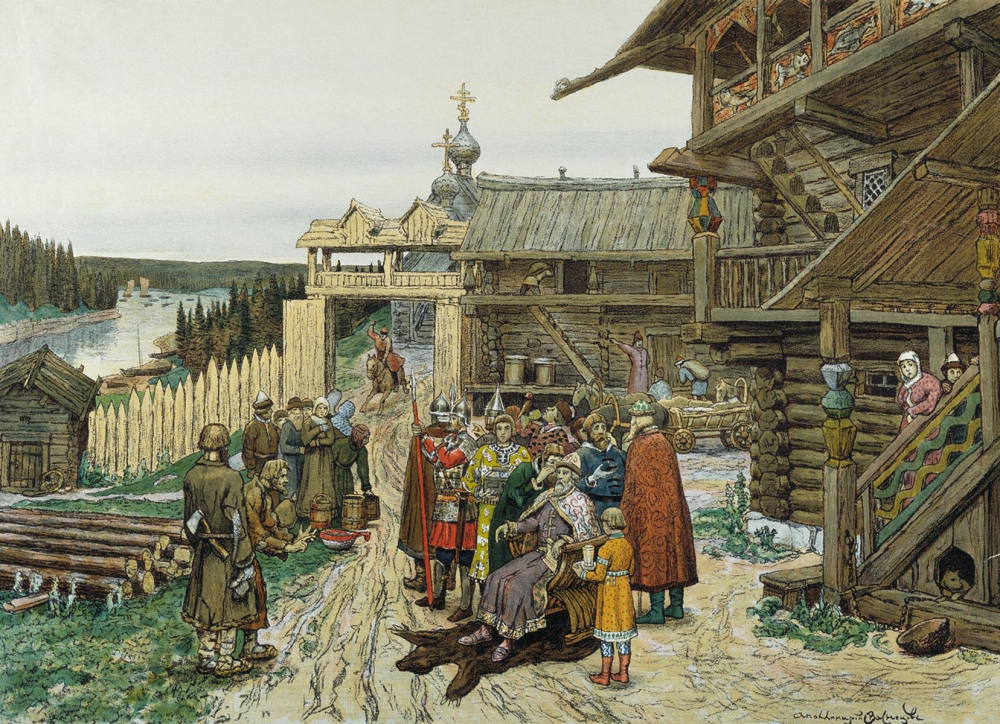
Daniil Aleksandrovich was Aleksandr Nevsky's youngest son and an infant when his father died. In 1263, he was allocated Moscow - then only a minor city, which was ruled by governors until Daniil finally came of age. Daniil of Moscow grew up to be a peaceful prince although he was occasionally forced to take a side between his warring brothers. He is credited with founding Moscow's first two monasteries - the Danilov Monastery in 1282 and the Bogoyavlensky Monastery in 1296. Daniil also widened the borders of his small principality. In 1301 Moscow defeated the Ryazan Principality and incorporated Kolomna. In 1302, Prince Ivan Dmitrievich of Pereslavl-Zalessky died childless and left his principality to his uncle Daniil. Daniil himself died in 1303 and passed on to his son Yuri a Moscow which had increased in both size and significance.

